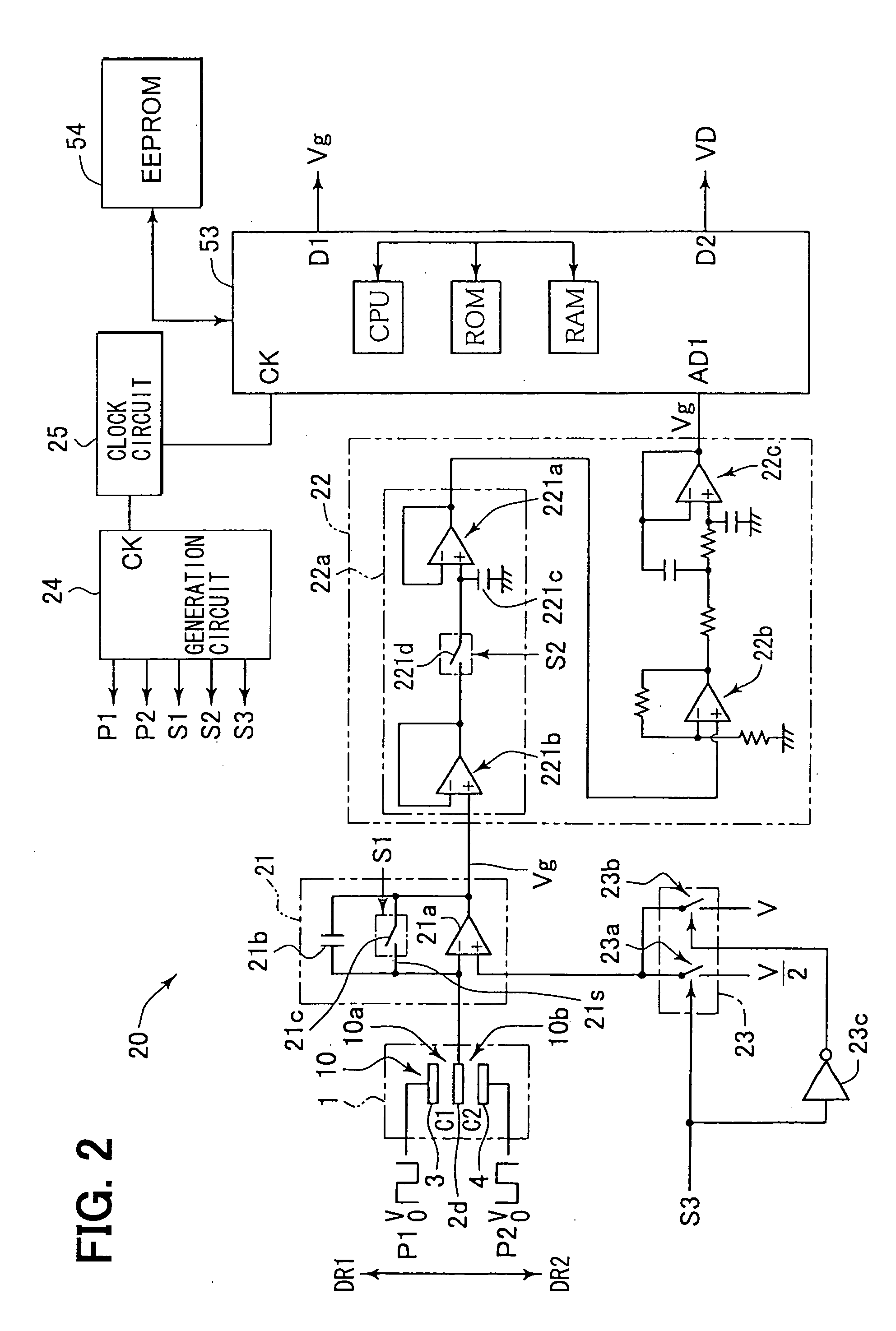Capacitive acceleration sensor system
- Summary
- Abstract
- Description
- Claims
- Application Information
AI Technical Summary
Benefits of technology
Problems solved by technology
Method used
Image
Examples
first embodiment
[0029] (First Embodiment)
[0030]FIG. 1 illustrates an example of the constitution of a capacitive sensor unit for use in an acceleration sensor system according to a first embodiment of the present invention. The sensor unit comprises a sensor element 10 and a detection circuit 20. In the sensor element 10, an inertial displacement body 2c that senses acceleration and develops displacement is coupled with a substrate 1 by anchor portions 2a through beam portions 2b. The substrate 1 functions as a sensor frame. Movable electrodes 2d are integrated with the inertial displacement body 2c, and fixed electrodes 3 and 4 are formed on the substrate 1 so that they are opposed to the movable electrodes 2d. The inertial displacement body 2c, the beam portions 2d, the anchor portions 2d, and the movable electrodes 2d integrally provide a beam structure 2.
[0031] In this embodiment, the beam structure 2 is so formed that it is in plate shape as a whole. The inertial displacement body 2c is recta...
second embodiment
[0064] (Second Embodiment)
[0065] Another detection circuit 20 according to a second embodiment of the present invention is described with reference to FIG. 4. The detection circuit 20 includes as substantial parts the charge-voltage conversion circuit 21, the signal processing circuit 22, the control signal generation circuit 24, and the microcomputer 53. The charge-voltage conversion circuit 21 comprises the operational amplifier 21a provided with the negative feedback capacitor 21b for charge detection. Change in the charge output of the detection capacitors 10a and 10b is inverted and inputted. The charge-voltage conversion circuit 21 thereby converts it into voltage and outputs it as an acceleration signal. The inverting input terminal of the operational amplifier 21a is connected to the movable electrodes 2d. When V is taken as bias voltage for detection to the detection capacitors 10a and 10b, a voltage of V / 2 is inputted to the non-inverting input terminal of the operational ...
PUM
 Login to View More
Login to View More Abstract
Description
Claims
Application Information
 Login to View More
Login to View More - R&D
- Intellectual Property
- Life Sciences
- Materials
- Tech Scout
- Unparalleled Data Quality
- Higher Quality Content
- 60% Fewer Hallucinations
Browse by: Latest US Patents, China's latest patents, Technical Efficacy Thesaurus, Application Domain, Technology Topic, Popular Technical Reports.
© 2025 PatSnap. All rights reserved.Legal|Privacy policy|Modern Slavery Act Transparency Statement|Sitemap|About US| Contact US: help@patsnap.com



